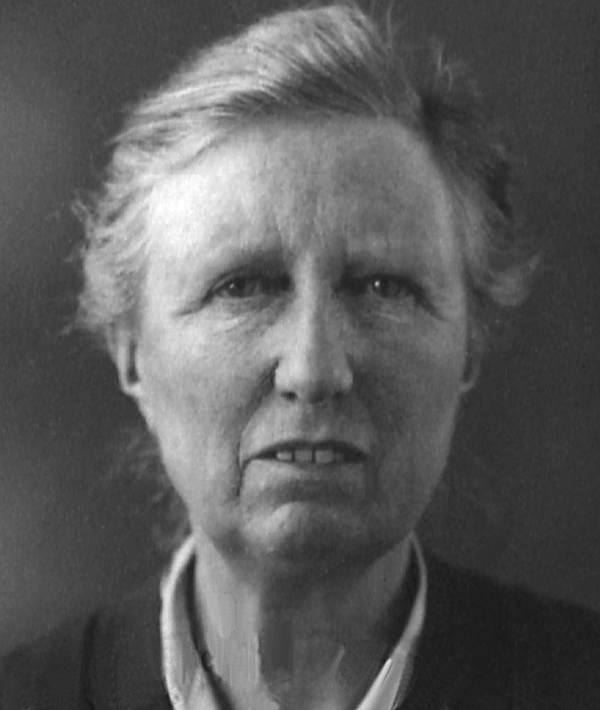History
Blakeney, formerly a seaport now a resort, is typical of the north Norfolk coast in that some 40% of the houses are second homes or holiday lets. It is atypical in that many local workers still live in the cottages their ancestors built and inhabited. That this is possible is due in large part to the Blakeney Neighbourhood Housing Society.
The BNHS was founded in 1946 by a remarkable woman, Mrs Norah Clogstoun, a regular visitor who had finally settled in the village with her army officer husband in 1938. War work took her into many of the houses of villagers and she was shocked by the parlous state most of them were in – leaking roofs, jammed windows and unsafe chimneys were typical.
Mrs Clogstoun set about trying to persuade the landlords, many of them absentee, to make repairs but without much success. She came to the conclusion that she would have to own the properties herself if she was to get the results she wanted; so it was that in June 1944 she bought the row of five cottages “formerly known as Hawkins’ Yard and now known as Leatherdale Yard”. She had to borrow the money to complete the purchase.
The realisation that rehabilitating old cottages on this scale was beyond her slender resources led in May 1946 to the formation of a Housing Society, advised by the National Federation of Housing Societies, run by a committee of seven local people. In July 1946 it was registered under the Industrial & Provident Societies Acts, charitable status being granted in 1949. By the time of the first Annual General Meeting in February 1948, the Society had acquired fifteen houses at an average cost of £112 and had spent as much again on repairs and improvements, including laying on a supply of electricity to the five cottages without it. At this time water still came from the well – and sewage went out in a bucket. An evocative film of this period is available here.
From the beginning the Society was concerned to preserve Blakeney’s characteristic appearance. This provoked some hostility from those who would rather sweep away all the old properties and build new ones. Indeed just such a plan was drawn up in the late ‘40s but post-war shortages meant it was quietly shelved.
New houses were built by the Walsingham Rural District Council in the 1950s, and the Society’s own project to construct sheltered accommodation for old people eventually materialised under WRDC auspices as Thistleton Court – later augmented by another outstanding Blakeney charity, Glaven Caring. The Society has not since pursued new building though they have brought three ex-Council houses back into the social rented sector, two in Blakeney and one in Cley.
The early years were marked by chronic undercapitalisation. A mortgage taken out in 1950 was repaid only after a struggle and as a result the Society has been largely debt-averse ever since. By 1951 BNHS had thirty-six cottages but conversions (combining two properties into one) and sales reduced this to twenty-two. 1951 was also the year that piped water first appeared in Blakeney though it was not until 1953, in the aftermath of the terrible storm, that it became general throughout the village. Mains sewerage did not appear until 1962. Somehow the Society squeezed a bathroom into every one of their cottages, though one tenant refused to have an inside toilet until the day she died (and not even then) – a mere couple of years ago.
The BNHS housing stock remained at twenty-two until 1985 when it grew again with the bequest of ten cottages owned by local resident John Wallace, most of them with sitting tenants and all of them in need of refurbishment. One more recent purchase, ‘Brynfield’ in Cley, also came with an elderly sitting tenant who refused to have anything done to his home while he lived there; when he moved on the place was extensively rebuilt. The current stock is thirty-nine, plus four leased to Broadland Housing Association.
It has been a constant battle to maintain and improve the cottages while keeping rents at levels appropriate to a low wage area – and to the demands of the Rent Officer – not made any easier by the fact that in the 1970s half of them were listed as of special architectural interest: a great honour but also an added expense. Today the rents are moving towards parity with other comparable social housing providers. Most properties now have primary or secondary double glazing, central heating and full insulation, and of course inside toilets, to make them fit for the 21st Century.
In 2007 the Society’s efforts were acknowledged by the receipt of the Queen’s Award for Voluntary Work, presented to our Chairman, John Seymour, in a ceremony at the Great Hospital in Norwich by Richard Jewson, the Lord Lieutenant of Norfolk. A proud day.
This history is expanded in the Society’s Sixty Fifth Anniversary booklet 1946 – 2012 “Sixty Five years of Village Housing and Conservation”, which is available from most pubs or shops in Blakeney or by post from the Secretary (see the Contacts page) for £2.50 + SAE.

